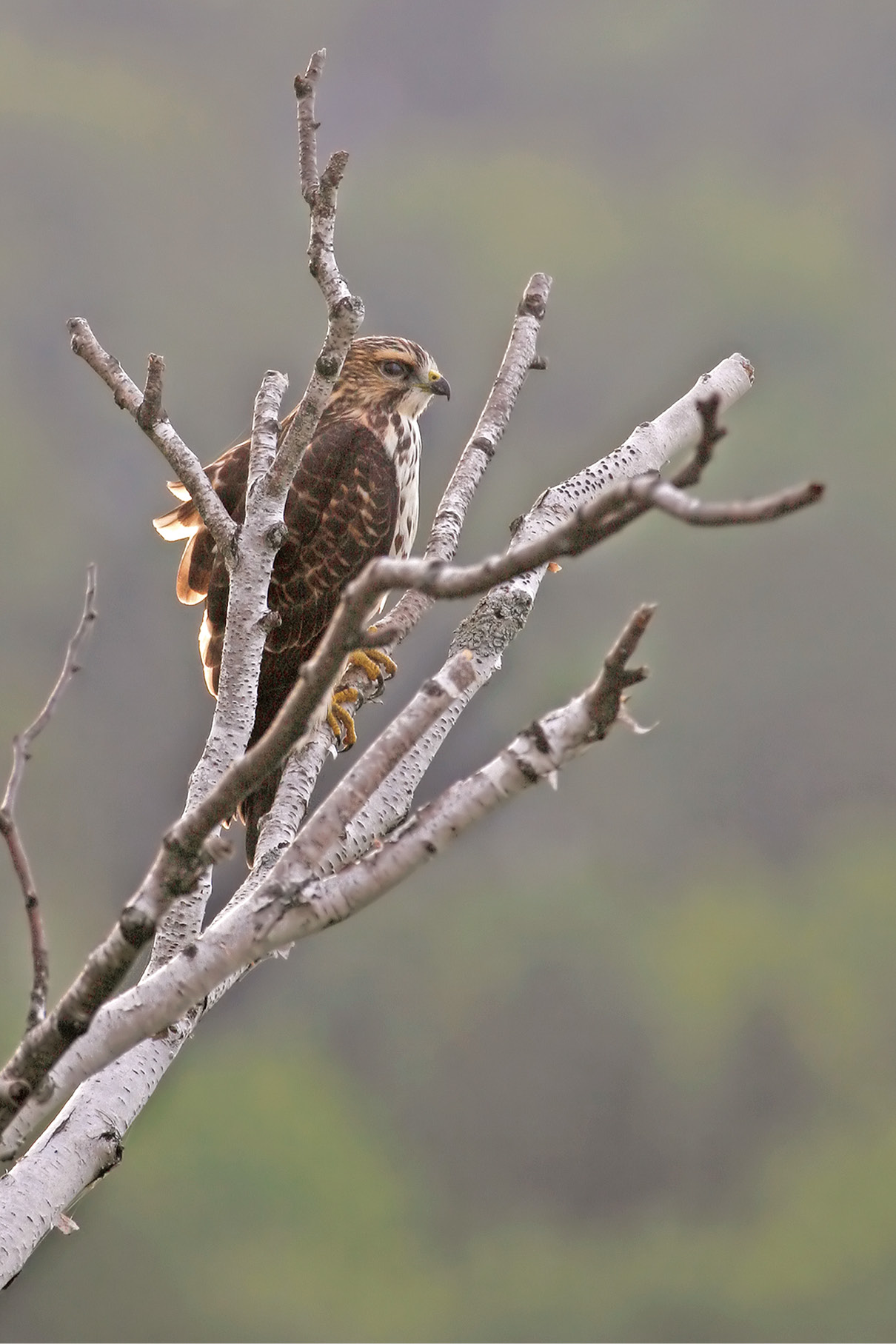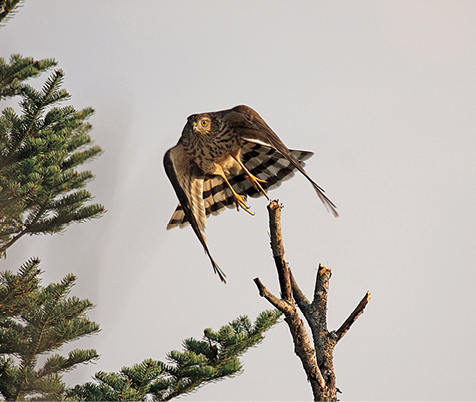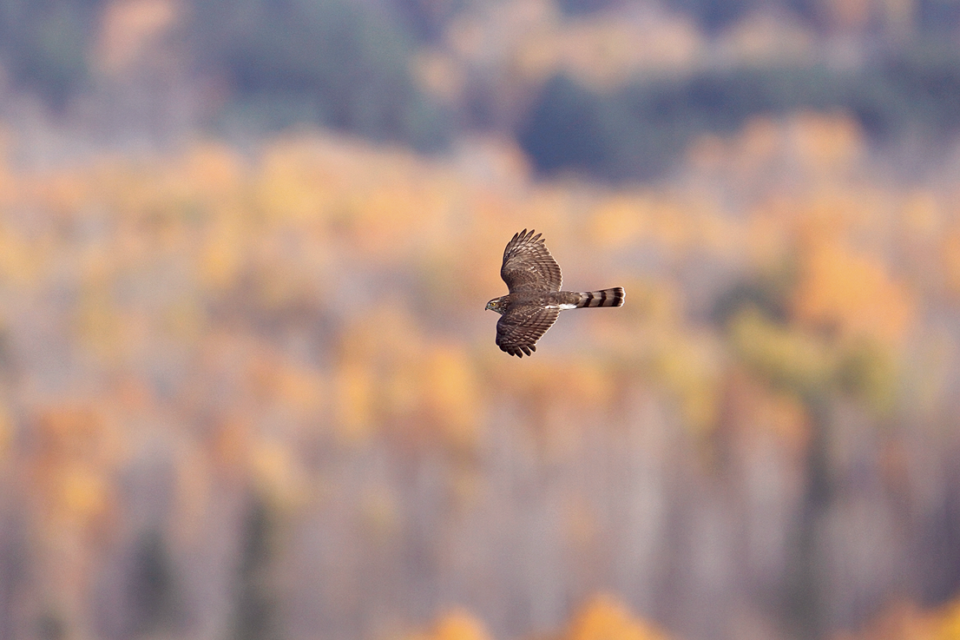It may come as a surprise to some readers of Northern Wilds that the North Shore of Lake Superior is one of the best places in North America to watch the autumn migration of raptors—birds of prey. Among birders, it is internationally famous, especially Hawk Ridge in Duluth. But what makes the North Shore special in this regard?
Lake Superior, with it’s vast, cold expanse presents a formidable barrier. Although lack of food and resting places certainly make up part of the reason these birds choose not to cross the big lake, the real reason is water temperature. Yes, the birds don’t like the cold water, and not for the reason you might think. All raptors utilize thermal updrafts on which they can glide during their journey. But these updrafts are only created where there is warm air, and as any resident of the shoreline knows, there’s no warm air over the big lake.
What causes thermal updraft? Updrafts are caused by the sun heating the ground. The warm surrounding air then begins to rise. The rising pockets of hot air are called thermals. And when these thermals bump up against steep hillsides, they concentrate and become even stronger, rising above the peaks at the top.
And that brings us to the second reason why the North Shore is so ideal for hawk watching—a rapid change of gradient just inland from the lake. Unwilling to fly across the cold lake, and with a series of peaks and a nearly continuous ridge from northeast to southwest, hawks, eagles, and falcons can ride thermals for miles at a time with barely a flap of their wings. They can, and do, often create “kettles” of soaring hawks, rising, rising, rising in circles until mere specks, at which point they begin their long glide to the next promontory and its rising thermals.

Bird migration, raptors or not, really isn’t about fleeing cold weather. Most northern birds are well adapted to survive cold weather as long as they have access to food. Indeed, it is exactly that—food is the central reason for bird migration, and this is true of raptors. Osprey need open water to catch fish. Hawks that feed on songbirds, like the sharp-shinned hawk, need to follow those seed eating sparrows. Insect eating falcons, like the American kestrel, need to go where there are insects. You get the idea.
The autumn raptor migration begins in early September and lasts into November. The first raptors to migrate are those that eat a lot of insects, like the kestrel. This beautiful, tiny, falcon follows the migration of dragonflies (yes, some dragonflies migrate too!), like wolves might follow a herd of caribou. They, and their food, travel in sync. The other early migrants are the sharp-shinned hawk, which is the smallest member of the accipiter group of hawks, which includes the Cooper’s hawk and northern goshawk, and the merlin, a small falcon. Both merlins and sharp-shins prey upon small songbirds, which not coincidentally, are also migrating. Again, the predator follows its prey.
By the third week of September, and continuing into October, the medium and large raptors show up. These raptors include broad-winged hawks, red-tailed hawks, northern harriers, peregrine falcons, osprey, and a few strays from the prairie—Swainson’s hawks. As the month progresses, more northern goshawks appear, the small early raptors become rare, and the late migrating raptors take over. While a few members of these species can be seen earlier in the autumn, the main push of bald and golden eagles, as well as rough-legged hawks, close out the end of the fall migration in November.
Hawk Ridge Bird Observatory, located on a ridge above eastern Duluth, is famous for the viewing it provides because as the raptors fly south from Canada, they hit the big lake at various points along the North Shore. Here, they turn southwest and accumulate towards the end of the lake. At times, the numbers at this location can be astounding—on just one day (September 15, 2003) 101,698 broad-winged hawks were seen!

However, you don’t have to travel to Duluth to watch the migration. Any peak or cliff inland within a mile or so from the lake, that has a clear vista, can provide good viewing. Carlton Peak, Pincushion Mountain, Oberg Mountain, Britton Peak, and other high points along the shore are all good places to scan for raptors.
Weather makes a big difference in the movement of these birds. Watch the forecast for northwesterly winds (which drive the birds to the lake) and warm (for that time of year) temperatures, which create the thermals. If the wind is off the lake, stay home. Sky-high viewing is best from 10 a.m. until about 2 p.m. as the birds take advantage of the warming, rising air. But if you’re a photographer, or just want to see a few of these birds up close, get out a little after sunrise.
Having roosted in trees during the night, the raptors begin their day by hunting for breakfast. As they do so, they frequently fly from perch to perch along the ridgeline, scanning for prey. Although you won’t see nearly as many raptors during this early flight, those you will see will be fun to observe and photograph.
And if you must pick just one week to get out and watch the flight, you couldn’t go wrong by venturing forth the third week in September. Enjoy the show, and don’t forget your binoculars.






